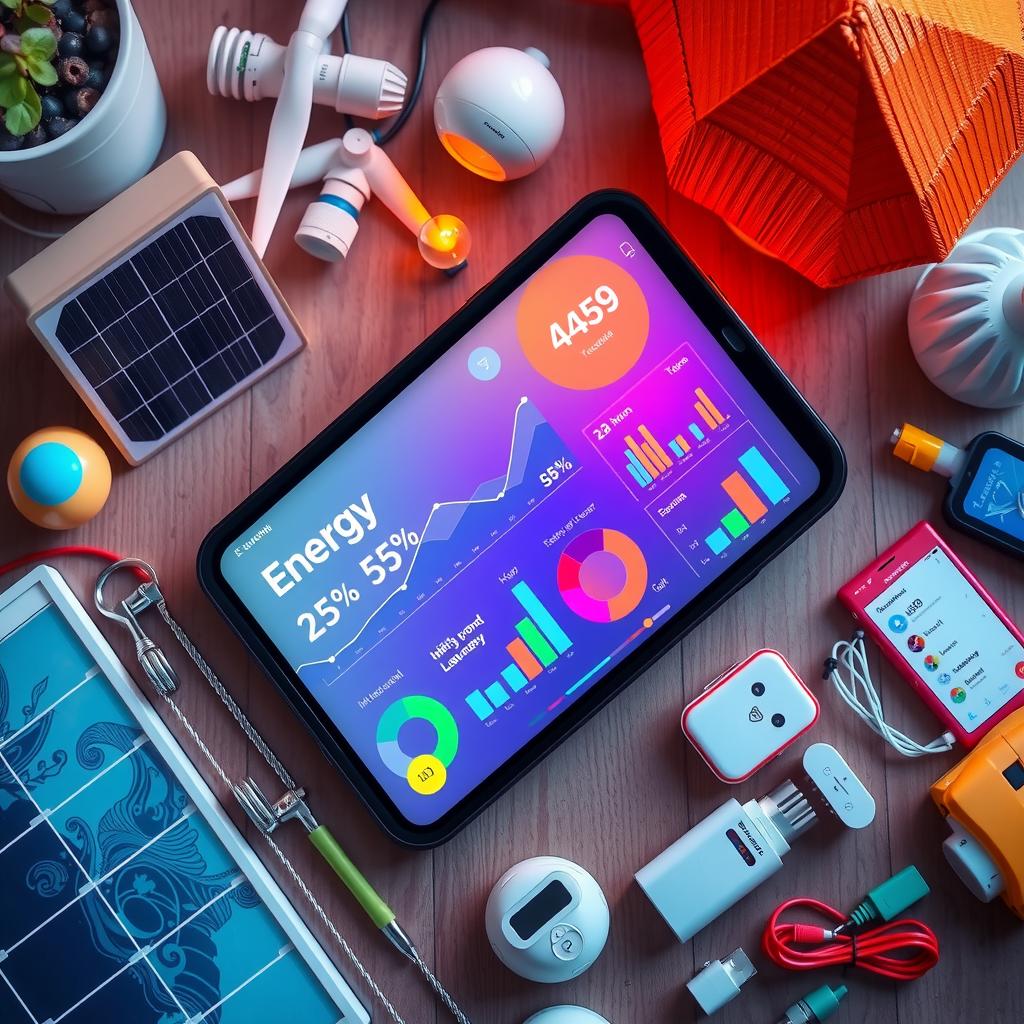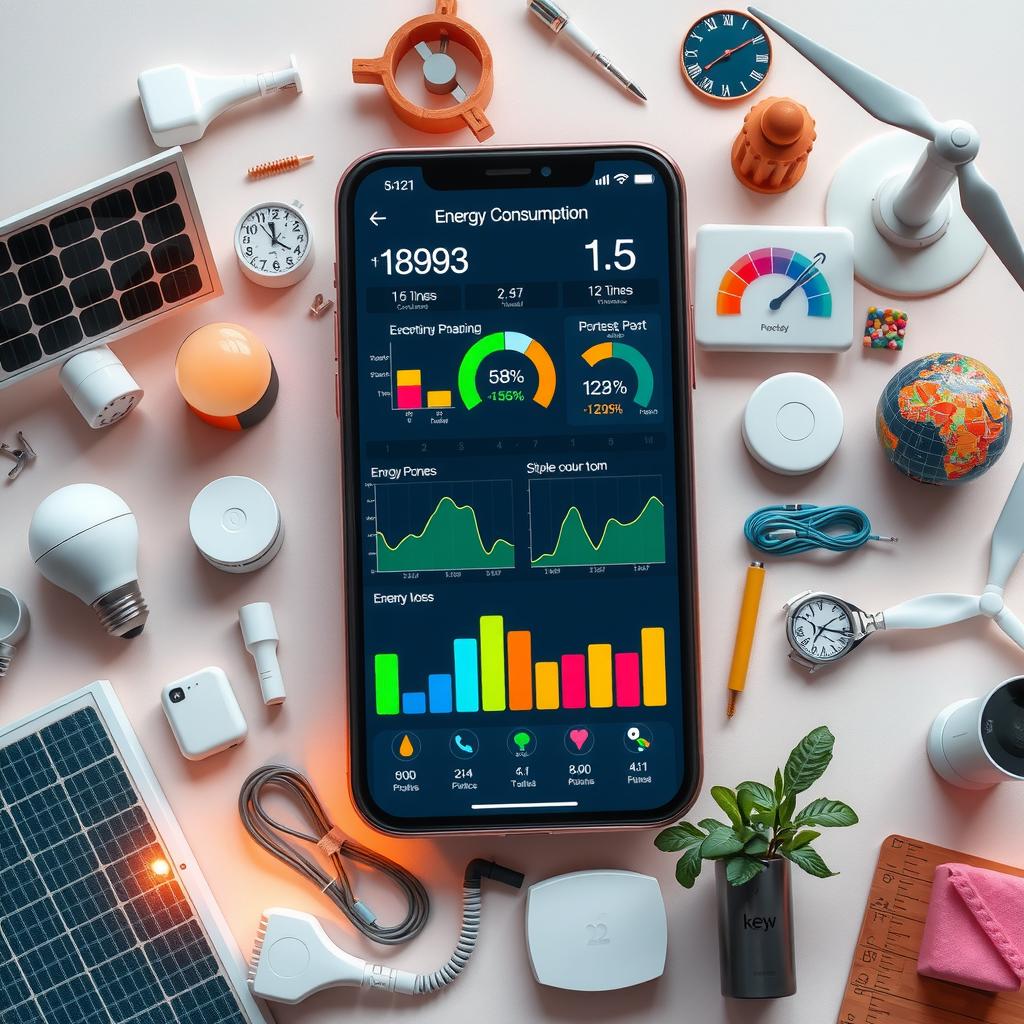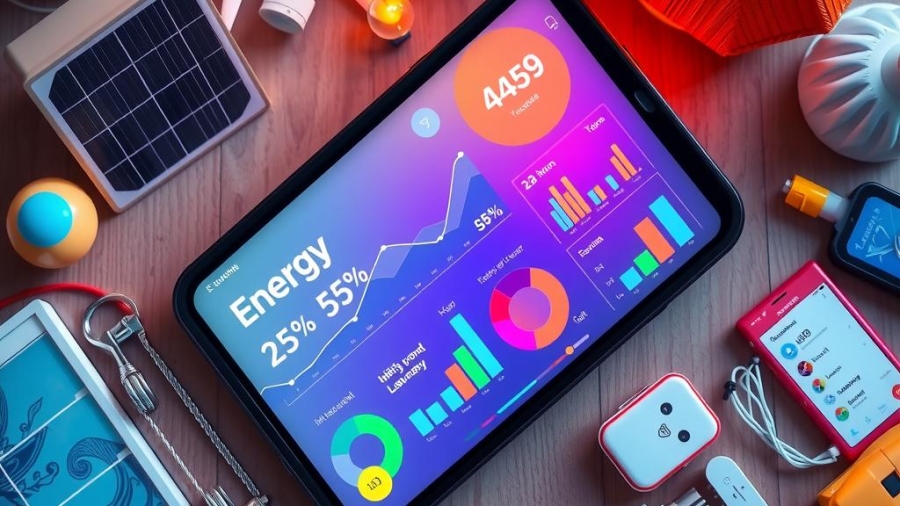In an age where environmental consciousness is at an all-time high, the question of energy consumption looms large for both individuals and businesses alike. As climate change becomes a pressing global issue, tracking one’s energy usage has never been more crucial. This need to monitor and manage energy effectively not only aids in reducing utility bills but also plays a pivotal role in minimizing one’s carbon footprint. With various tracking apps flooding the market, finding the right tool can feel overwhelming. However, these digital solutions offer essential features that cater to diverse user needs—from providing detailed insights into energy habits to recommending strategies for efficiency improvement.
Understanding how much energy is consumed daily allows users to make informed decisions about their habits and behaviors. Many people are unaware of just how much power household appliances or office equipment consumes over time. Fortunately, modern energy monitoring tools have evolved significantly; they now provide real-time data on usage analysis, helping users identify areas ripe for improvement while promoting sustainable practices. These applications serve not only as personal assistants in resource management but also as educational platforms that raise awareness about conservation efforts.
The core value of this blog post lies in its comparative analysis of popular energy consumption tracking applications available today. By examining their functionalities side by side—ranging from intuitive interfaces to robust analytics—the intent is clear: empower readers with information that enables them to select the best app tailored to their specific needs and sustainability goals.
As we delve deeper into this comparison, it becomes evident that each application offers unique advantages aimed at enhancing everyday life through improved efficiency and responsible resource use. The right choice can transform sporadic efforts into consistent lifestyle changes focused on sustainability—a win-win situation for both users and the environment alike. So whether someone aims to cut down on excessive electricity use or simply wishes to become more aware of their ecological impact, navigating through this landscape of options will reveal practical solutions designed with these objectives in mind.
Join us as we explore some leading contenders in the realm of energy consumption tracking apps—uncovering which ones stand out amidst a sea of choices while shedding light on how they can contribute towards a greener future for everyone involved.

Key Points:
-
Diverse Application Options: A variety of tracking apps are available that cater to different user needs and preferences, enhancing the overall experience of monitoring energy consumption. These applications provide tailored functionalities that help individuals or businesses identify their specific energy usage patterns.
-
Enhanced Resource Management: The ability to conduct detailed usage analysis through these apps empowers users to make informed decisions about their energy habits. By visualizing trends and receiving actionable insights, users can optimize their resource management strategies effectively.
-
Focus on Sustainability Goals: As awareness around environmental impact grows, these innovative tools become crucial in supporting sustainability efforts. They not only assist in reducing one’s carbon footprint but also promote long-term efficiency improvement, making small changes lead to significant savings over time.

The Necessity of Energy Monitoring
Why Tracking Energy Consumption is Crucial in Modern Society
In an era marked by increasing environmental awareness and a collective push towards sustainability, understanding energy consumption has emerged as a critical priority for both individuals and businesses. Monitoring energy usage allows stakeholders to not only reduce costs but also contribute positively to the planet. By implementing effective energy monitoring practices, individuals can track their daily habits, identify areas where they may be over-consuming, and make informed decisions that lead to significant reductions in their carbon footprint. For businesses, this form of oversight is equally important; it empowers them to optimize operations through efficient resource management. Those who invest time in analyzing their usage analysis find that small adjustments—such as switching off devices when not in use or investing in more efficient appliances—can result in substantial savings on utility bills while simultaneously promoting sustainable practices.
Tools for Effective Tracking
Utilizing Technology for Enhanced Energy Management
The proliferation of technology has made tracking energy consumption simpler than ever before. Various sustainability tools, including mobile applications designed specifically for monitoring energy use, have transformed how users engage with their power consumption data. These apps provide real-time insights into electricity usage patterns and allow users to set goals or alerts based on personalized parameters. By leveraging these advanced technologies, consumers can enhance their awareness of daily activities contributing to excess usage while facilitating better decision-making processes regarding energy efficiency improvements. Furthermore, the integration of smart home systems enables automatic adjustments based on user behavior—this means lights dimming when rooms are unoccupied or thermostats adjusting temperatures according to occupancy levels—all potential contributors towards minimizing overall waste.
The Impact on Carbon Footprint
How Tracking Contributes Towards Environmental Goals
One paramount benefit derived from meticulous tracking of energy consumption lies within its impact on reducing one’s overall carbon footprint. As communities worldwide work diligently toward mitigating climate change effects, understanding individual contributions becomes essential. Each kilowatt-hour saved translates directly into fewer emissions released into the atmosphere; therefore prioritizing methods such as regular monitoring leads not only towards financial savings but also fosters global responsibility among citizens and organizations alike. In fact, companies focusing heavily on transparent reporting around resource management often experience heightened trust from consumers eager to support environmentally-friendly initiatives—a trend increasingly evident among younger demographics who prioritize brands committed long-term sustainability efforts.
Creating a Culture of Awareness
Fostering Sustainable Habits Through Education
Promoting a culture centered around conscious energy use begins with education at all levels—from schools introducing programs aimed at teaching students about responsible habits early-on through workplace initiatives encouraging employees’ participation through challenges related directly back-to-energy reduction measures implemented company-wide strategies too improving operational efficiencies further down supply chains respectively . When everyone involved understands why tracking matters—their role within larger ecological frameworks—they become motivated participants striving towards creating positive changes locally globally resulting ultimately healthier ecosystems thriving future generations ahead . This shared commitment cultivates an environment where sustainable choices become ingrained behaviors rather than mere options available momentarily thus leading humanity closer together achieving mutual objectives preserving natural resources ensuring prosperity enduring times ahead without compromising quality life itself!
Comparative Analysis of Tracking Apps
Evaluating Energy Consumption Monitoring Tools for Enhanced Efficiency
In an era increasingly focused on sustainability, the emergence of energy consumption tracking apps has become pivotal in promoting efficiency and resource management. These applications harness advanced functionalities to help users monitor their energy usage effectively, providing insights that assist in reducing their carbon footprint. For instance, one notable feature is real-time monitoring, which allows individuals and businesses to track their energy consumption patterns as they occur. This immediate feedback can lead users to make informed decisions about when and how they consume power, ultimately enhancing overall efficiency. Moreover, many apps incorporate predictive analytics that leverage historical data to forecast future energy needs; this functionality aids users in optimizing their usage strategies over time.
Unique Features Driving Sustainability
Diving deeper into the unique capabilities of these energy monitoring tools, several standout features emerge as critical enablers of sustainability practices. For example, some applications offer detailed usage analysis reports that break down consumption by device or category—this granular view empowers users to identify high-energy-consuming appliances and consider alternatives or upgrades with better efficiencies. Additionally, integration with smart home technologies further amplifies these benefits by automating adjustments based on user habits and preferences. Such automation not only simplifies daily life but also ensures optimal performance during peak hours when electricity tends to be more costly or environmentally taxing.
Enhancing User Engagement through Gamification
To foster a deeper commitment towards efficient energy use among consumers, many tracking apps employ gamification techniques designed to engage users actively in their sustainability journey. By introducing challenges or rewards systems based on reduced consumption levels or sustainable actions taken—such as using less electricity during peak periods—these tools create a motivational environment for change. Users often find themselves competing against personal bests or comparing achievements with friends within the app’s community framework; such engagement not only makes the process enjoyable but also reinforces positive behavior toward resource management long-term.
In conclusion, while there are numerous options available within the realm of energy consumption tracking apps, each presents unique functionalities tailored towards improving user experience and fostering responsible habits regarding energy use. As society continues its push toward greater sustainability efforts worldwide, leveraging these innovative solutions will undoubtedly play an integral role in shaping a more efficient future for both individuals and organizations alike.
Choosing the Optimal App for Smart Living
A Guide to Finding Your Perfect Fit
In today’s increasingly digital world, selecting the right app tailored to individual needs can significantly impact one’s lifestyle and sustainability efforts. When searching for an effective tracking app for energy consumption, users should focus on usability as a primary criterion. An intuitive interface ensures that even those who are not tech-savvy can easily navigate through features without frustration. This is particularly important when it comes to energy monitoring, where users need immediate access to data regarding their energy usage patterns. Moreover, reporting features play a crucial role in providing insights into how resources are being utilized over time; thus enabling users to make informed decisions about efficiency improvement. A well-designed app will offer detailed visualizations of historical data and real-time feedback, which are essential components in tracking progress towards sustainability goals.
Another vital consideration is integration capabilities with existing systems or smart devices within the home environment. An ideal application should seamlessly connect with other technologies such as smart thermostats, lighting systems, or appliances that contribute to overall resource management efforts. This level of integration allows for comprehensive usage analysis, helping individuals understand their carbon footprint more effectively and identify potential areas for improvement quickly. For instance, if an app can link up with both heating and cooling systems while offering actionable recommendations based on performance metrics, it stands out as a superior choice among its competitors.
When evaluating various options in the market today—ranging from simple utilities focused solely on tracking electricity use to advanced platforms equipped with multiple sustainability tools—it is critical for consumers not only to assess functionality but also long-term adaptability of these applications as technology advances continue at breakneck speed. The best apps will evolve alongside user needs by incorporating feedback mechanisms that allow them to refine their offerings based on usage trends observed within their community of users.
Furthermore, regularly updated applications tend toward better security measures designed specifically around protecting personal information while ensuring smooth operation across diverse environments—both indoors and outdoors—which adds another layer of trustworthiness valuable during selection processes.
Ultimately, determining which application aligns best involves weighing priorities against available options within context: Are ease-of-use features paramount? Is seamless interoperability non-negotiable? By establishing clear criteria upfront rooted in practicality rather than mere hype surrounding new functionalities or design aesthetics alone leads one towards discovering truly beneficial solutions capable of transforming everyday habits into responsible practices aimed at fostering sustainable living choices going forward.
Frequently Asked Questions:
Q: What are the primary benefits of using an energy consumption tracking app?
A: Utilizing a tracking app for monitoring energy consumption provides numerous advantages, including detailed insights into usage patterns and behaviors. These applications facilitate better resource management, enabling users to identify areas where they can reduce their carbon footprint and improve overall efficiency. Additionally, many apps offer tailored recommendations that encourage sustainable practices, ultimately leading to cost savings.
Q: How do these apps help in achieving sustainability goals?
A: Many modern sustainability tools incorporate features designed to promote ecological responsibility. By analyzing user data through advanced reporting capabilities, these apps highlight opportunities for improvement in energy efficiency. Users can visualize trends over time, allowing them to make informed decisions that align with their personal or organizational sustainability targets.
Q: Are there specific features I should look for when choosing an energy monitoring app?
A: When selecting a tracking app, individuals should consider functionalities such as ease of integration with existing systems, comprehensive usage analysis, and real-time monitoring capabilities. Look for applications that provide actionable insights based on your unique usage patterns while offering intuitive interfaces that simplify the process of managing your energy consumption effectively.
